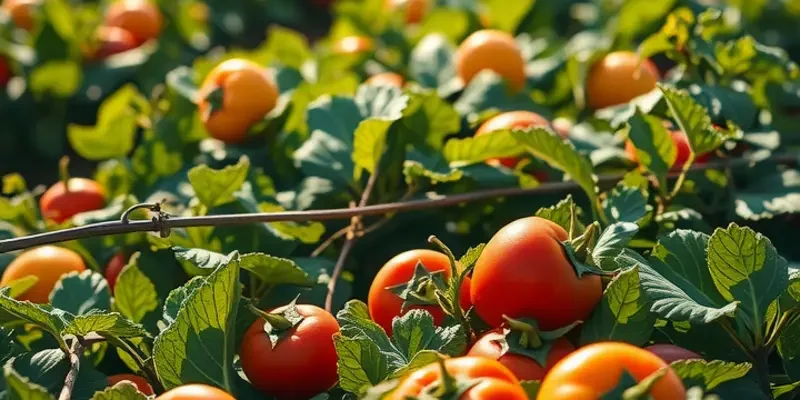Curious about diet trends? Pescatarianism, a style that emphasizes fish and seafood while still including plant-based foods, offers numerous health benefits and a sustainable approach to eating. Let’s dive into this flexible and delicious dietary choice.
What is Pescatarianism?

Pescatarianism is a dietary choice prioritizing plant-based foods complemented with seafood as the primary source of animal protein. This diet distinguishes itself from vegetarianism by including fish and seafood while excluding other animal meats. Unlike carnivorism, which involves consuming a wide variety of animal proteins, pescatarianism centers around a more restricted selection that offers distinct nutritional benefits.
One of the key aspects of pescatarianism is its nutritional profile. Seafood is an excellent source of high-quality protein, rich in essential amino acids needed for muscle repair and maintenance. Additionally, seafood provides essential fats like omega-3 fatty acids. Omega-3s offer significant health benefits, including reducing inflammation and supporting brain health. Discussions around the necessity of fish oil supplements often arise within the context of such diets. To explore this further, you might be interested in this guide addressing whether fish oil is necessary within a balanced diet.
Many essential vitamins and minerals such as vitamin D, B12, iodine, and selenium are abundant in seafood. These nutrients play a crucial role in various bodily functions, including thyroid regulation and immune support. For those considering pescatarianism, understanding these nutritional aspects can be pivotal in ensuring a balanced intake.
The foods included in a pescatarian diet extend beyond just fish. People incorporate a wide variety of plant-based foods such as fruits, vegetables, legumes, nuts, and seeds. The diet emphasizes fresh produce, whole grains, and an array of seafood like salmon, shrimp, and shellfish, resulting in a flavorful and varied culinary experience.
Individuals choose pescatarianism for a variety of reasons. Environmental concerns often rule prominently among motivations. Compared to red meat, fish production has a significantly lower environmental impact, making this diet an attractive option for those seeking sustainability. Ethical reasons also play a part; some individuals find it easier to navigate ethical concerns connected to agriculture and meat production by focusing on seafood.
Health implications are another driving force. Pescatarianism often aligns with recommendations for heart health due to its inclusion of omega-3 rich foods and lower saturated fat content compared to diets heavy in red meat. Moreover, many adopt this diet as a transitional approach towards vegetarianism or flexitarian eating patterns, appreciating the flexibility and variety it offers.
Understanding pescatarianism requires an appreciation of both its nutritional advantages and the broader lifestyle considerations it encompasses. By focusing on seafood as the primary animal protein source and diversifying their culinary landscape with plant-based options, individuals explore a balanced, health-conscious, and environmentally mindful diet.
Practical Insights for a Pescatarian Diet

Transitioning to a pescatarian diet can be an exciting culinary journey, combining both flavor and health benefits. Here are practical tips to ease your way into a fish-forward lifestyle, ensuring that your meals are not only delicious but sustainably sourced.
Start with meal planning as it is crucial to maintaining a balanced pescatarian diet. Weekly meal planning can help streamline your grocery shopping and minimize food waste. Consider incorporating a variety of fish, grains, and vegetables into your weekly menu to keep meals diverse. Practical ingredient batching can save time and ensure that you have prepared ingredients ready for quick assembly. By setting a day aside for prep, you can efficiently create meal bases that can be refreshed throughout the week with different fish and veggies.
Experimenting with recipes is both fun and practical when embracing a pescatarian diet. Try simple fish tacos with grilled white fish topped with shredded cabbage and a squeeze of lime. A hearty veggie paella can also become a pescatarian delight with the addition of shrimp or mussels. For a quick dinner, consider speedy seafood prep techniques such as pan-searing salmon fillets with a sprinkle of herbs and lemon zest.
Sourcing sustainable seafood is a crucial aspect of a responsible pescatarian diet. Opt for fish that have been certified by reputable sustainable seafood organizations. Engage with local fish markets where you can inquire about the origins of their offerings, ensuring you’re supporting eco-friendly practices.
While transitioning, some may encounter challenges like finding reliable sources of protein and iron. Seaweed and algae supplements can complement your intake, offering omega-3s that you’d normally get from meats. Boost your meals with flavor enhancers without relying on excessive salt, using citrus, herbs, and spices to keep your dishes vibrant.
It’s common to face obstacles when phasing out other animal products. Gradually replace red meats with fish in your favorite dishes. This not only helps in adapting your taste buds but also ensures that you continue to enjoy your meals. Explore different global cuisines that are inherently pescatarian-friendly, such as Mediterranean or Japanese, offering natural integration into your new diet.
Lastly, to avoid unconscious eating habits, practice mindfulness during meals. Focusing on each bite can enhance your enjoyment and awareness of flavors while helping to regulate portion sizes.
Transitioning to a pescatarian diet need not be daunting. With strategic planning, delicious recipes, and sustainable choices, you can enrich your culinary experience while enjoying the health benefits of a fish-forward diet.
Final words
Pescatarianism presents a flavorful way to improve your health while embracing sustainability in food choices. With a focus on both fish and plant-based foods, it allows for flexibility in meal planning and promotes a balanced diet. By understanding its foundations and incorporating practical strategies, you can enjoy the myriad benefits this diet has to offer while exploring new culinary delights.








